SQL Reports
SQL Report is an analytical tool that enables you to create, edit or view a report using data from 3rd party data sources that are written in SQL query or visual mode. It allows you to select data from a database that you created an integration in your project (e.g., some Google Big Query or MS SQL database) and create the report based on that data.
SQL Reports availability in BETA
This feature is currently available in the BETA version, but we are working on its improvement.
When to use SQL Reports
You are able to display data from the 3rd party data sources in the SQL reporter via writing custom SQL query. If you want to use data from Bloomreach Engagement BigQuery, you can make a report out of them through the SQL Reports feature. Another use of those reports is when you want to write a SQL query as a more flexible editor and then just display the results in Bloomreach Engagement.
How to create a SQL report
- Navigate to
Analysis->SQL reports.
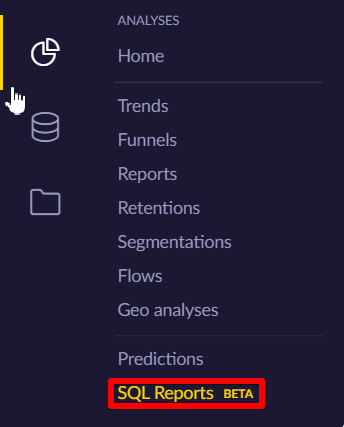
- Click on the
+or+New SQL report. - You will see a new SQL editor. As a datasource, choose one of you SQL integrations you want to use data from and click on the
Load data model. The loading of data might take a few seconds.
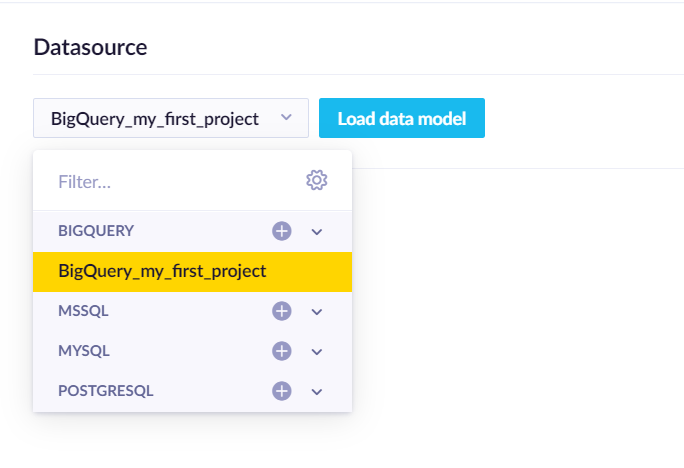
- Choose either Visual mode or SQL mode according to your preferences.
- Do not forget to click on the “Save” button when done.
If you want to display your final results, you have two options to do so:
- In the “SQL report” library, directly click on the particular SQL report and when it opens, you can view the results.
- Through the dashboard:
- Go to “My dashboards” from the side menu.
- Either edit an already existing dashboard or create a new one.
- Add “SQL report node” to your dashboard.
- Select the SQL report to display
- After clicking on the “Save” button, the final report results are added to the dashboard to view them.
Different Modes
Visual mode
Visual mode works the same way as standard reports. There are rows, columns and metrics in order to create a report. It helps with a better visualization of raw data. You can summarize the data in a grid table or a chart. If you want to find out how standard reports work and how to create them, read more in the article about them.
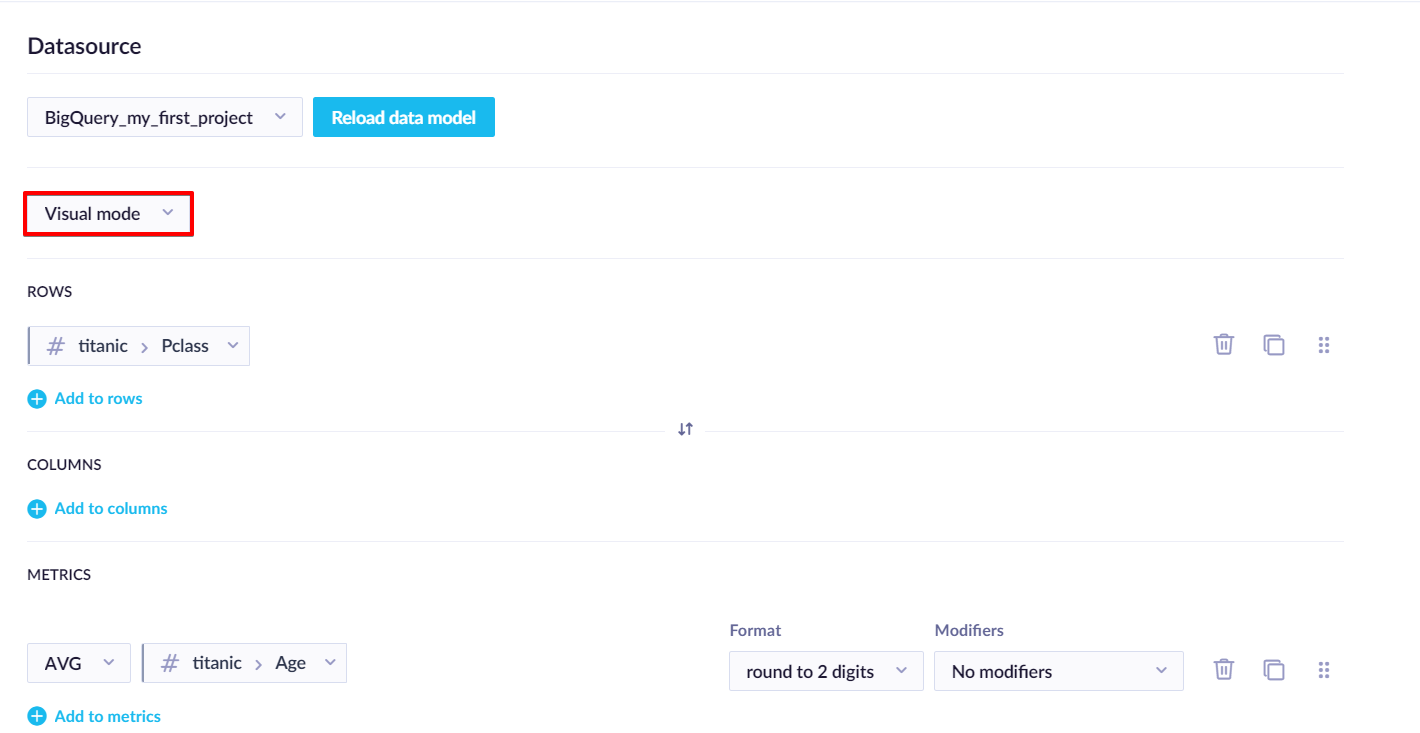
SQL mode
In SQL mode, there is an available side column with available tables to query on, loaded for selected data sources. After clicking on the table, there are displayed all available columns for the current table, displayed also with their column type (number, string, ...). You can paste the name of column / table by clicking on the plus sign next to the name of table / column (visible when hovering over it).
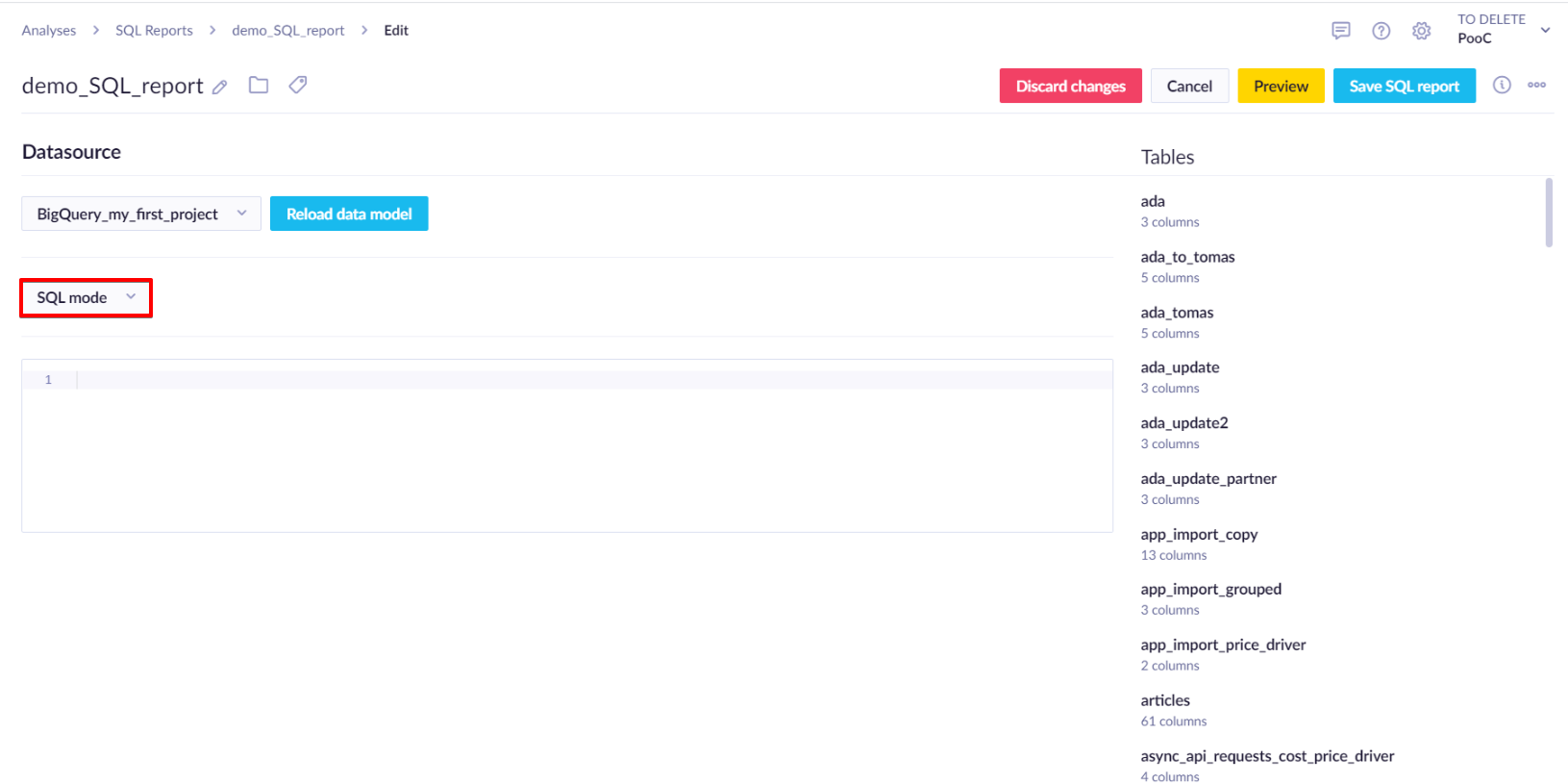
Editing Actions
In the upper right corner, there is a dot icon. After clicking on it, the bar menu will appear with those options for editing/adjusting the whole report:
| Action Type | Description |
|---|---|
| Save as new | If you want to edit an already existing report and you want to save it as a new report. |
| Download CSV | It is an exporting option. |
| Add to Dashboard | A shortcut of adding the report to your dashboard. |
| Show usages | It shows places where the analysis has been used in your project. |
| Delete analysis | It erases the whole report. |
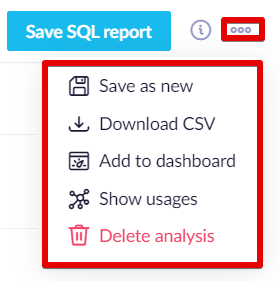
Updated about 2 years ago
